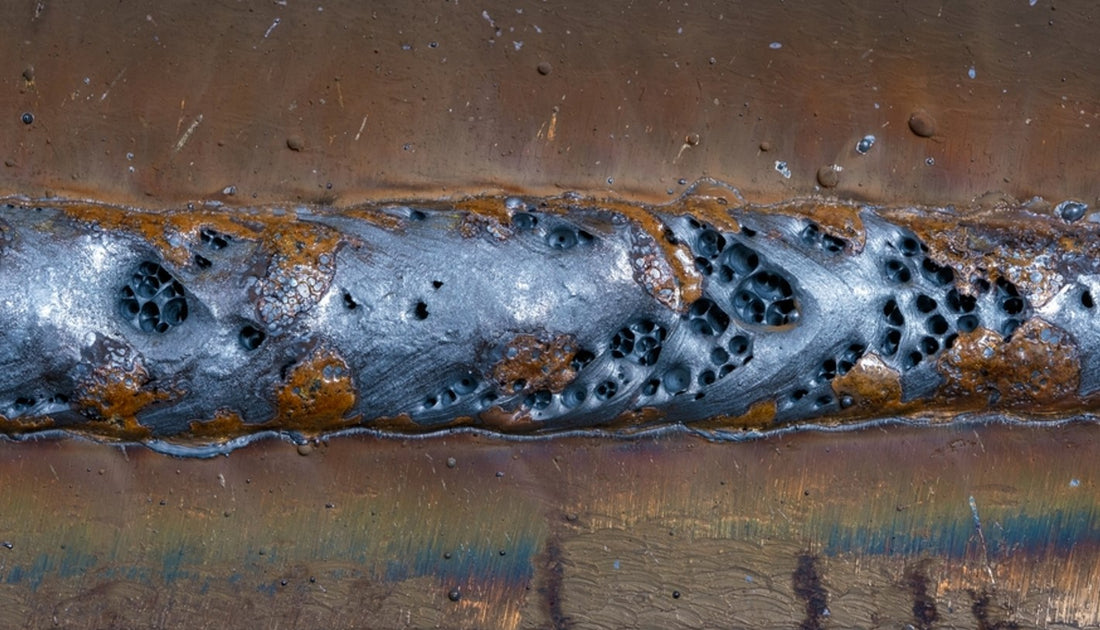Professional Suggestions on What is Porosity in Welding and How to Address It
Professional Suggestions on What is Porosity in Welding and How to Address It
Blog Article
The Science Behind Porosity: A Comprehensive Guide for Welders and Fabricators
Comprehending the detailed devices behind porosity in welding is important for welders and makers striving for flawless workmanship. From the make-up of the base materials to the intricacies of the welding procedure itself, a multitude of variables conspire to either worsen or reduce the visibility of porosity.
Recognizing Porosity in Welding
FIRST SENTENCE:
Exam of porosity in welding reveals essential understandings into the honesty and top quality of the weld joint. Porosity, characterized by the presence of dental caries or voids within the weld metal, is an usual worry in welding procedures. These gaps, otherwise properly dealt with, can jeopardize the architectural integrity and mechanical homes of the weld, bring about potential failures in the completed product.

To find and evaluate porosity, non-destructive testing techniques such as ultrasonic testing or X-ray assessment are typically used. These strategies permit the identification of interior issues without jeopardizing the integrity of the weld. By examining the size, form, and circulation of porosity within a weld, welders can make educated choices to improve their welding procedures and attain sounder weld joints.

Variables Affecting Porosity Development
The incident of porosity in welding is affected by a myriad of elements, varying from gas protecting effectiveness to the ins and outs of welding criterion settings. One important aspect adding to porosity development is insufficient gas protecting. When the shielding gas, commonly argon or CO2, is not successfully covering the weld pool, atmospheric gases like oxygen and nitrogen can pollute the molten metal, bring about porosity. In addition, the cleanliness of the base products plays a substantial function. Contaminants such as rust, oil, or dampness can evaporate during welding, developing gas pockets within the weld. Welding specifications, including voltage, current, take a trip rate, and electrode type, additionally influence porosity development. Utilizing incorrect settings can produce excessive spatter or warm input, which in turn can lead to porosity. Furthermore, the welding method used, such as gas metal arc welding (GMAW) or shielded metal arc welding (SMAW), can affect porosity formation as a result of variations in heat circulation and gas coverage. Understanding and regulating these elements are vital for reducing porosity in welding operations.
Effects of Porosity on Weld Top Quality
The presence of porosity additionally deteriorates the weld's resistance to corrosion, as the trapped air or gases within the voids can respond with the surrounding setting, leading to degradation over time. In addition, porosity can prevent the weld's capability to endure stress or effect, more threatening the general quality and dependability of the welded framework. In critical applications such as aerospace, vehicle, or structural building and constructions, where safety and sturdiness are vital, the detrimental impacts of porosity on weld top quality can have serious consequences, highlighting the significance of lessening porosity through appropriate welding strategies and treatments.
Strategies to Reduce Porosity
Additionally, using the suitable welding specifications, such as the proper voltage, current, and travel speed, is essential in stopping porosity. Keeping a regular arc size and angle throughout welding also helps decrease the possibility of porosity.

Furthermore, selecting the best securing gas and keeping appropriate gas circulation prices Website are essential in minimizing porosity. Making use of the ideal welding strategy, such as back-stepping or employing a weaving motion, can also help disperse warmth equally and lower the opportunities of porosity development. Last but not least, making certain proper air flow in the welding setting to get rid of any kind of prospective sources of contamination is crucial for accomplishing his comment is here porosity-free welds. By executing these strategies, welders can successfully lessen porosity and create top notch welded joints.

Advanced Solutions for Porosity Control
Applying innovative technologies and cutting-edge methods plays a crucial role in attaining exceptional control over porosity in welding procedures. One advanced option is making use of advanced gas mixes. Protecting gases like helium or a mix of argon and hydrogen can assist minimize porosity by offering far better arc stability and boosted gas protection. Additionally, using sophisticated welding methods such as pulsed MIG welding or modified environment welding can additionally help alleviate porosity issues.
An additional innovative solution involves using Recommended Reading advanced welding devices. As an example, making use of equipment with built-in functions like waveform control and sophisticated power sources can boost weld quality and reduce porosity risks. The implementation of automated welding systems with precise control over parameters can dramatically decrease porosity issues.
In addition, including sophisticated tracking and examination technologies such as real-time X-ray imaging or automated ultrasonic testing can assist in identifying porosity early in the welding procedure, permitting for prompt restorative actions. In general, integrating these advanced remedies can substantially enhance porosity control and improve the overall top quality of bonded elements.
Final Thought
In verdict, understanding the scientific research behind porosity in welding is important for welders and makers to produce high-grade welds - What is Porosity. Advanced services for porosity control can further improve the welding procedure and ensure a solid and dependable weld.
Report this page